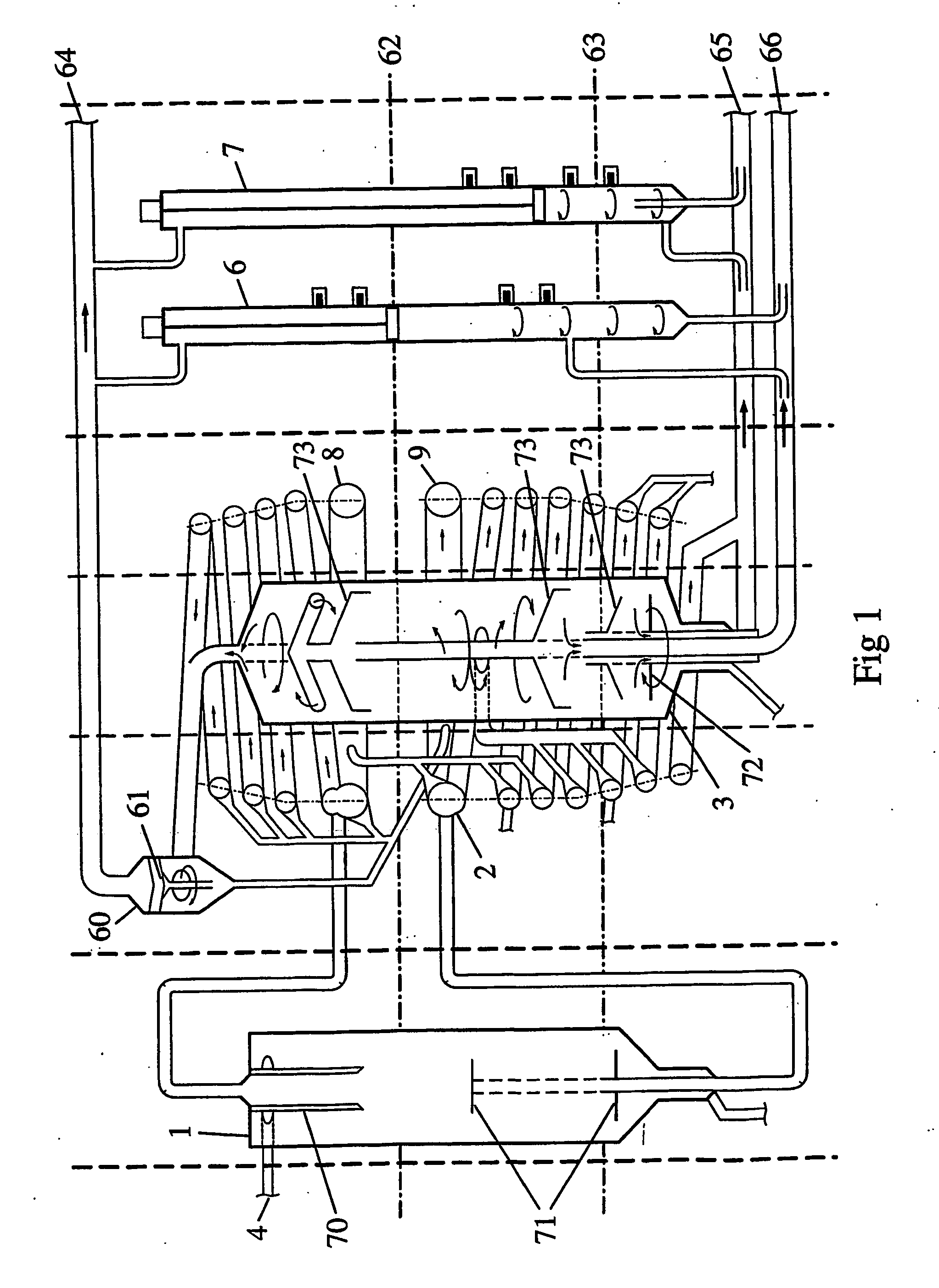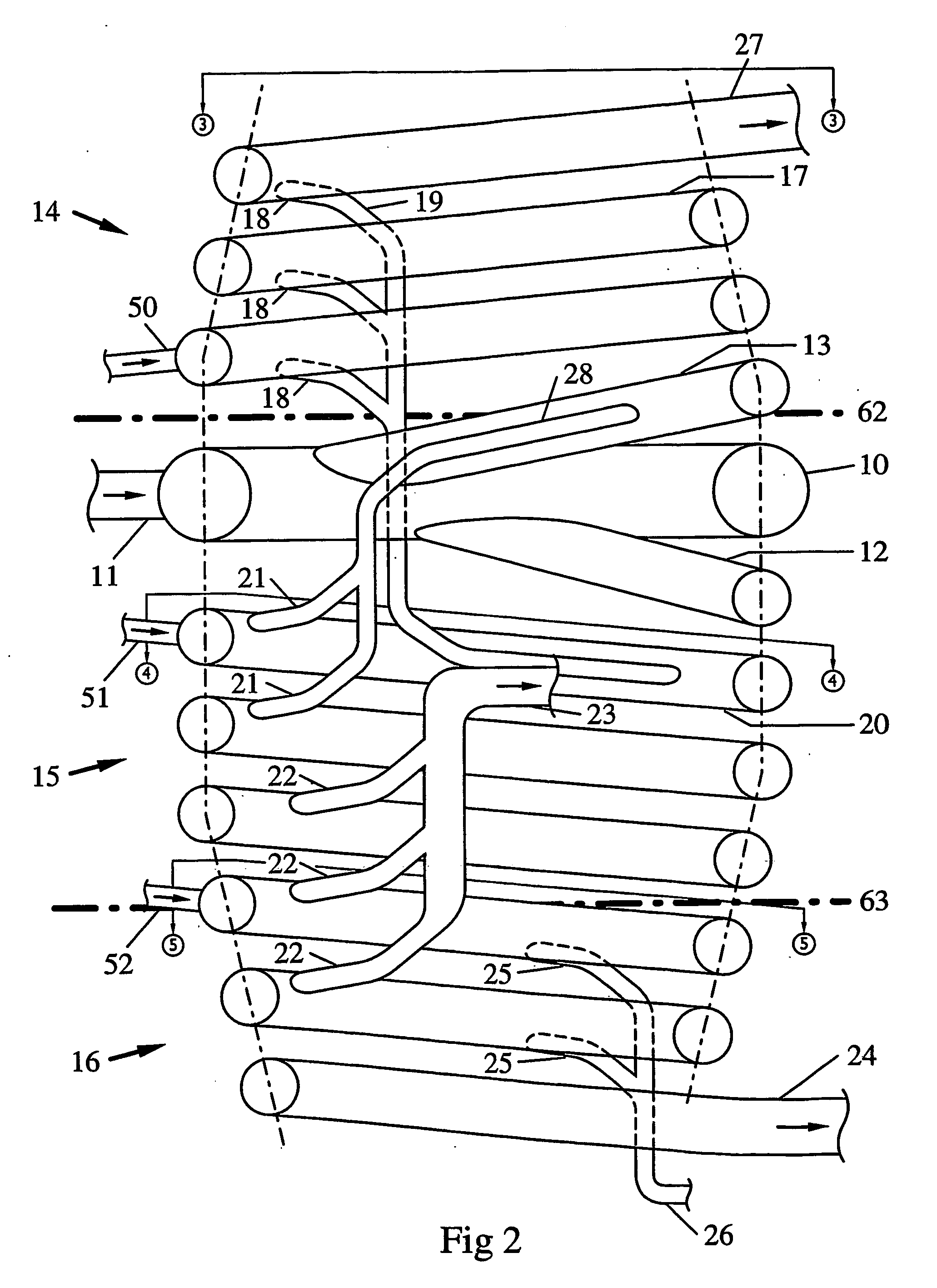Separator
a technology of separator and separator plate, which is applied in the field of separator, can solve the problems of high field capital expenditure and operational expenditure, reduce the commercial ceiling at which the field can be operated viably, and no longer commercially viable to operate the well, and achieve the effect of quick and efficient separation of multi-phase flow
- Summary
- Abstract
- Description
- Claims
- Application Information
AI Technical Summary
Benefits of technology
Problems solved by technology
Method used
Image
Examples
Embodiment Construction
[0041] The present invention aims to overcome the problems associated with the prior art and to provide a separator which can quickly and efficiently separate multiphase flow into the individual component flows.
[0042] According to the present invention, there is provided a separator for separating multiphase fluid, the separator comprising: [0043] an inlet for a multiphase fluid; [0044] a plurality of outlets, at least one for each selected separated phase; [0045] a main annular tubular bore through which the multiphase fluid is caused to flow and to separate into lighter and heavier fluids, the bore having an outlet for each of the lighter and heavier fluids.
[0046] Thus, the present invention provides a rotational path through which the multiphase fluid is caused to flow and allows a large volume flow path to be achieved without requiring a large separation vessel. The separator of the present invention can be provided in a low snag resistant module and does not require a drillin...
PUM
| Property | Measurement | Unit |
|---|---|---|
| velocity | aaaaa | aaaaa |
| velocity | aaaaa | aaaaa |
| diameter | aaaaa | aaaaa |
Abstract
Description
Claims
Application Information
 Login to View More
Login to View More - R&D
- Intellectual Property
- Life Sciences
- Materials
- Tech Scout
- Unparalleled Data Quality
- Higher Quality Content
- 60% Fewer Hallucinations
Browse by: Latest US Patents, China's latest patents, Technical Efficacy Thesaurus, Application Domain, Technology Topic, Popular Technical Reports.
© 2025 PatSnap. All rights reserved.Legal|Privacy policy|Modern Slavery Act Transparency Statement|Sitemap|About US| Contact US: help@patsnap.com



